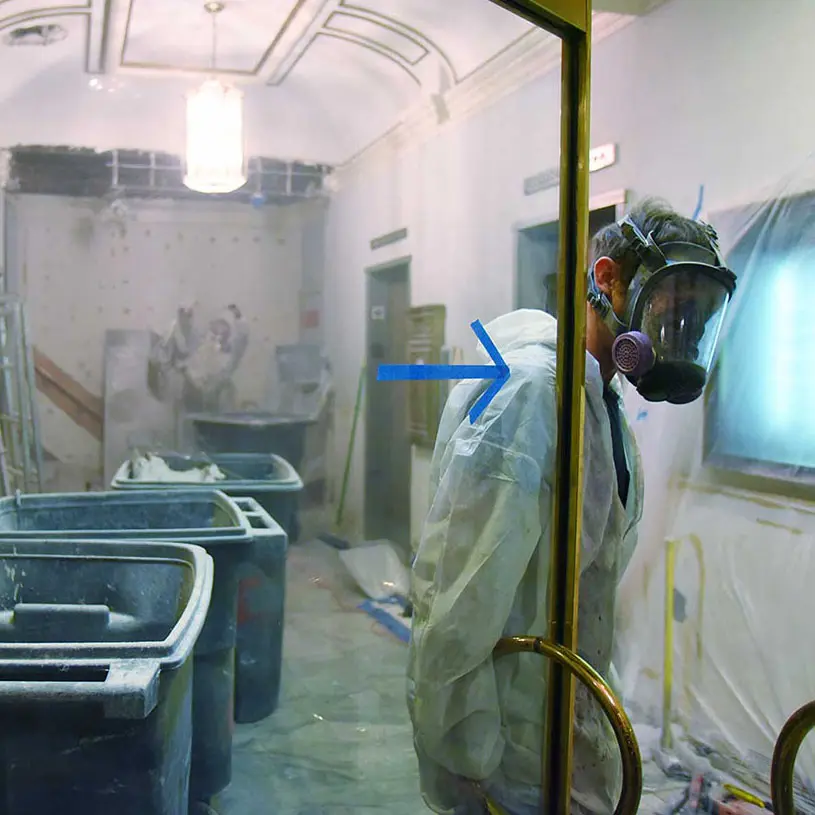This is what we walked through one Friday evening as we were leaving work.
The building we work in is under construction. There are many small and large annoyances that come with a live construction site nearby. One thing has been particularly awkward: access to our restrooms.
As you might suspect, most if not all construction workers are men. There is active pipe work going on in the building, so they often need to do work directly inside the women’s restroom at random times throughout the day. We would discover that a man is working on a ceiling duct in a space we expected to be for women only, and it has caused a considerable amount of tension.
While there may be many alternatives to doing construction work like this without warning, with less disruption of our work day, I had also started to question why this behavior felt like such an intrusion. After all, there are covered stalls with doors that go down close to the ground, so there’s still a significant amount of privacy.
The reason seems to be not the exposure itself, but the fact that a certain space (e.g. beyond the door that says “WOMEN”) has been designated for a specific use, and is limited to one gender. This situation is not default - in fact, there are a few alternatives:
Often located in smaller restaurants or coffee shops, a single-user bathroom normally does not have a gender restriction. One would simply wait for it to be vacant, and use it without a second thought.
A “family” bathroom (explicitly marked as such) is for one or many users. It is roomier than the “regular” bathrooms next to it, and normally utilized by a parent with children, or someone using a wheelchair. Few eyebrows would be raised when several people at once, regardless of gender, walk out.
At MOMA PS1 there is an explicitly declared unisex shared restroom. It has three stalls (with doors) and a urinal facing the back wall. It is a bit unsettling to use for the first time, but the explicit declaration makes it feel like a shared awkward experience, rather than a disadvantage of one group of people or another.
In summary - our expectations always determine what we consider to be unacceptable. The example of bathrooms in our office building clearly shows that a construction worker’s expectation (“this is my work site”) and my female co-workers’ expectation (“this is a space for women only”) did not line up. More importantly, both parties were “right” in their own way.
To me as a designer, this awkward situation clearly illustrates how important it is to understand a client’s or a colleague’s expectations in any given situation. It is entirely possible – especially when working with a client in an industry I am not familiar with – to commit terrible missteps without even knowing they happened.
To avoid the kind of toxic misunderstanding, it is important to communicate assumptions (even the “duh!” kind) early on in a project. It may feel awkward to have to say out loud the things that you consider to be understood by everyone involved. Get over it. When you find and defuse that one thing you did not agree was a given, it will all be worth it.


